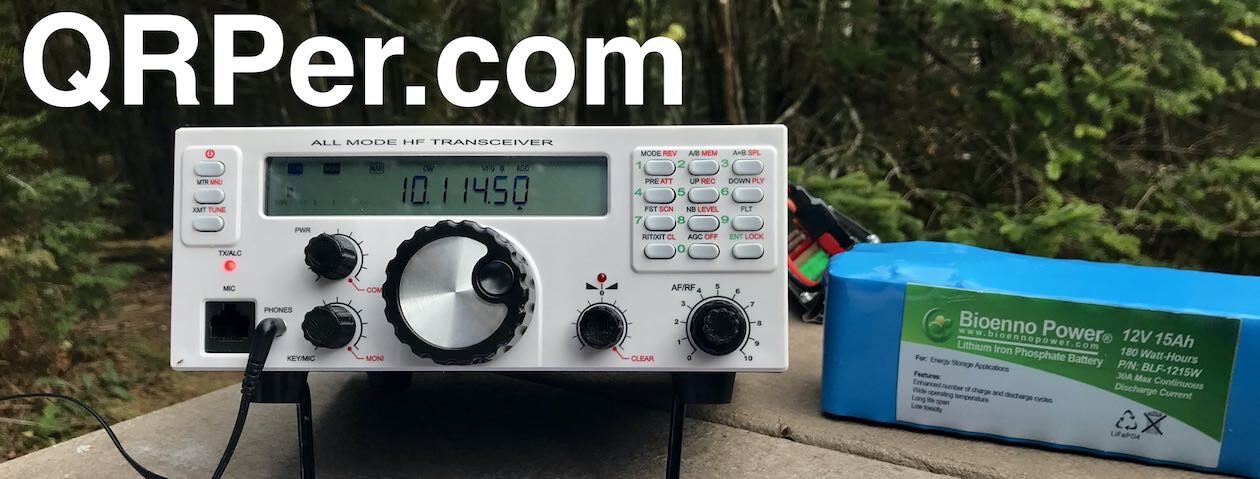As I was packing up my radio gear at the last activation I posted (click here for that field report), I paused to make a quick video and talk about my rucksack, my accessories pouches, and a winder I like to use with the MFJ-1984LP antenna.
Here are the products I mentioned:
GoRuck GR1 USA
 This is one of my favorite rucksacks for SOTA activations. I like the fact that it’s low-profile, structured, and feels great on the back even during extended hiking sessions.
This is one of my favorite rucksacks for SOTA activations. I like the fact that it’s low-profile, structured, and feels great on the back even during extended hiking sessions.
It’s also insanely rugged, weatherproof, and (frankly) over-engineered.
My GR1 was made in the USA by GoRuck. This company specializes in packs that are essentially designed to be used and abused. They’re all backed by a lifetime warranty. You pay for this kind of quality, though.
I purchased mine perhaps 3 years ago during a closeout sale on this particular color variant. When combined with my educator’s discount I think I paid around $210-220 US for it.
I originally bought it because I’m a huge fan of one-bag travel (read an article where I mention this on the SWLing Post). I discovered that the GR1 meets most airline regulations as a “personal carry on.” This means even with discount airlines and regional “puddle jumper” aircraft, I know I can always take it on board and never need to check it. I can easily travel one or two weeks out of this pack.

But in the field, the GR1 has the perfect amount of capacity for any of my QRP transceivers along with antennas, ATU, cables, and other accessories.
Click here to check out this pack at GoRuck.
Large Tom Bihn Travel Tray
Being a one-bag traveller (and certified pack geek) I’m also a massive fan of US pack designer and manufacturer, Tom Bihn.
I have a number of their packs, pouches, and organizers.
Without a doubt, one of my favorite TB items is the Travel Tray. It’s a brilliant concept: take this with you on a trip, open it up as a tray in your hotel room, and place all of your valuables in it. By doing this, you don’t have to search your room for your watch, keys, wallet, glasses, phone, etc. When you leave the room, all of those easy-to-lose items will be in one place. If you’re in a rush to catch a flight, grab the whole pack by the drawstring, secure it, and throw it in your carry on! It’s a simple, genius little sack/tray!
I also use these to organize radio accessories in my field pack. For example, I have one now dedicated to the TX-500. In the Travel Tray, I store all of the TX-500 adapters and cords, the speaker mic, a set of CW Morse Pocket paddles, a PackTenna EFHW, some RG-316, and a 3 aH LiFePo4 battery. I even carry a spare Muji notepad in it in case I forget my logging pad. With this little bag and the TX-500, I have everything I need to hit the air!
Note that I much prefer the large TB Travel Tray. My wife has both a large and small travel tray, but I find that the small one is just a little too small for most everything I wish to put in it. The large one’s outer diameter is large enough that you can also store a short coil of RG-58 coaxial cable/feed line in it.
Click here to check out large Travel Trays at Tom Bihn.
I love these so much, I purchased two more this week: one in black and one in coyote.
Thingiverse Wire Winder

Before we purchased a 3D printer (an Ender 3 Pro) I would make wire winders out of anything I could find. With a 3D printer, however, it’s so easy to make a winder sized perfectly for your application.
You may have seen winders in various colors in my video field reports–they all come from a simple project file on Thingiverse.
This winder is super easy to print and to enlarge or shrink. If you don’t have a 3D printer, likely someone you know does! Ask them to print this for you. They’re incredible useful.
Click here to view on Thingiverse.
Video
I made a very short video talking about all of these products post-activation:
































 Now I won’t feel bad if it gets dinged or scratched!
Now I won’t feel bad if it gets dinged or scratched!



















